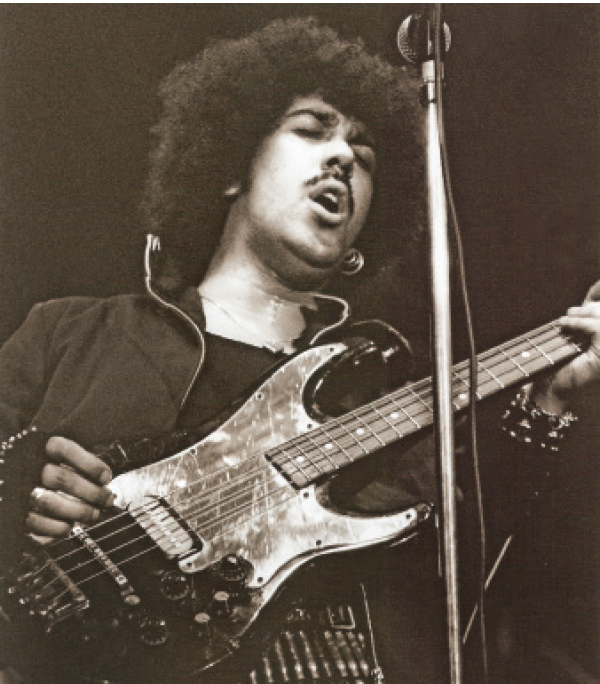
Lynott in action. Courtesy Wikimedia Commons.
By Geneva Pattison
We’ve had some great television viewing options over the last few months, with TV specials and blockbuster movies. However, one of the most impressive things RTÉ has had to offer this past season was the documentary Phil Lynott: Scéalta Ón Old Town.
Filmed in both Irish and English, it follows the famed Irish musician’s footsteps throughout Dublin for the filming of the music video for his classic track Old Town.
The music video was shot in 1982 and was a promo created especially for RTÉ, which was a game-changer at the time. In the documentary, we learn of his early life growing up in Crumlin with his mother Philomena. We also get insight on the formation of Thin Lizzy, the cultural shifts throughout the years and Phil’s experimentation with different genres of music. Similarly, we find out about Lynott’s hopes for solo success during this period of his life and about his love for his children.
The documentary interviews many of those closest to Lynott, including his mother Philomena, Eric Bell and Brush Shiels. There are also contributions from former Boomtown Rats manager Fachtna O’Ceallaigh, Jim Lockhart of Horslips, musician Alison O’Donnell and a host of Irish music aficionados.
The background issues of unemployment and rising levels of violence in Northern Ireland are explored as factors that made Thin Lizzy a unique combination. Their members were cross-border and multi-racial, which didn’t reflect the inward-looking culture in Ireland at the time. But as noted, the band gave people hope for what could be.
The recounting of Lynott’s life and musical progression as an artist highlights how much he achieved during his short time on this earth, although the topic is shrouded with an element of sadness. Eric Bell reflects on Phil’s interest in Celtic mythology and Celtic warriors, from which he drew inspiration for songwriting. Colm Ó Snodaigh of the band Kíla also talks about Lynott’s own view of himself, “when he was in England he was an Irishman, when he was in Ireland he was a Dubliner, when he was in Dublin he was from Crumlin.” This is a reiteration of a quote from Lynott and is truly telling of his strong roots in the country. For him, it was home and that echoed through his work.
The lyrics of Old Town sets the tone for many of the visuals. Probably the most memorable moment in the music video is the opening scene of Lynott atop the Ha’Penny Bridge at the heart of Dublin’s city centre. His girl has just left him on the bridge and as he leans over the railings he sings into the camera of their broken love.
Despite being filmed alone for many scenes, you really get a sense of Phil’s true character as he strolls along Grafton Street, echoing the lyrics “…in the end, you’ll soon recover.” He dances and laughs cheekily as he passes a selection of different people. For the most part, he exuded confidence and charm, that much was clear. The street was his stage.
He is shot from inside the Long Hall pub on Georges Street alone sitting with a solitary pint. The loneliness of heartbreak again surfaces here. The pub is empty and he misses his gal.
However, the mood shifts again when we see Phil in Herbert Park on the bandstand playing the trumpet as the camera circles around him, as if it’s a call to attention. He wants the world to know that he’ll bounce back.
Finally, Lynott is filmed walking off into the distance along the Great South Wall in Ringsend Dublin 4. He’s broken but hopeful, so he continues on into the unknown. Those interviewed note the poignancy of this shot as its closing scene, reminding us of Phil’s sad demise a few years after the hit song’s release or, as the song is referred to in the documentary, “his swansong.”
A proposal was set in motion last year to put up a plaque in the Herbert Park bandstand, commemorating the filming of Old Town, from the South East Area Committee. It has only reached the first stage of being passed.
Many of the interviews took place in the filming locations of the music video and seeing the present-day locations side-by-side with the 1982 shots brought everything back to life. It’s hard to believe Old Town was never a hit for Lynott during his lifetime, but it’ll go down in the annals of Dublin’s history as a song that showcased the city.



